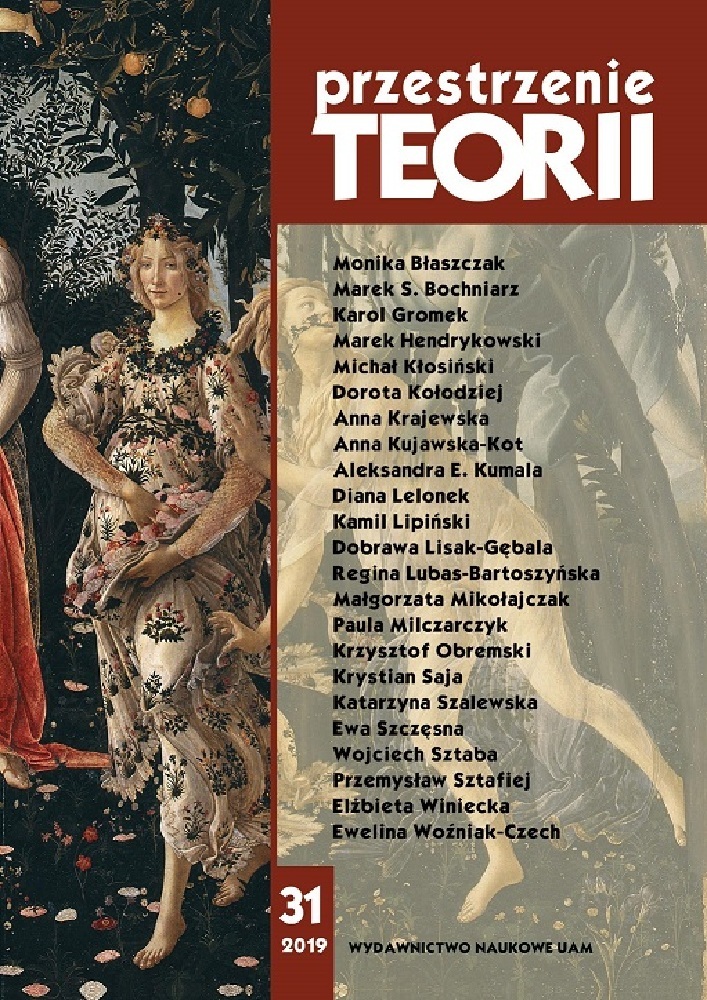Abstract
The Center for the Living Things is a research institute founded in 2016 in order to examine, collect and popularise knowledge concerning new non-human forms: plants, lichen, fungi and insects. All exhibits gathered in the Institute’s collection are abandoned objects, used commodities and those no longer needed – the debris of human overproduction, which has become the natural environment for many living organisms. Specimens were found in an illegal waste dumping site, where man-derived objects and plant tissues mix. These hybrids of plants and artificial objects are difficult to classify, as they are simultaneously animate and inanimate. Exhibits collected in the Center for the Living Things cannot be classified conventionally. Recently, waste has taken over behaviours from living matter. In the process of overproduction, the incessant need to constantly update the goods we possess is the reason why most of these unnecessary products seem to be out of our control. The Center for the Living Things aims to describe mechanisms appearing in the sphere of rejection and uselessness. In this sphere, products are no longer tools used by people. Products participate in almost every process that occurs in the biosphere, hence we cannot definitively separate economic or social processes from so-called natural processes. The Center aims to draw attention to these processes, seek connections and possible alternatives. Specimens are stored and cultivated in an ever-expanding collection at Poznań’s Botanical Gardens. This institution also organises also houses temporary exhibitions, presentations and workshops. Work is underway on an edition of the ‚Atlas of Waste-plants’ to appear at the end of 2019. More information and a digital version of the Institute’s collection can be found at: www.centerforlivingthings.com.References
Bakke M., Bio-transfiguracje. Sztuka i estetyka posthumanizmu, Poznań 2015.
Braidotti R., Po człowieku, Warszawa 2016 [2013].
Deleze G, Guattari F., Tysiąc plateau, Warszawa 2015 [1980].
Grosz E., Architecture from the Outside. Essays on the Virtual and Real Space, Cambridge, Mass., 2001.
Latour B., Polityka natury, Warszawa 2010.
Latour B., Splatając na nowo to, co społeczne. Wprowadzenie do teorii aktora-sieci, Warszawa 2009.
Melosik I., Rozmieszczenie Rhynchostegium megapolitanum [Web.et Mohr] B.S.G. w Polsce, „Badania Fizjograficzne nad Polską Zachodnią” 1993, vol. 42, s. 89–96.
Morton T., Hyperobjects, Philosophy and Ecology after the End of the World (Posthumanities), Minneapolis 2013.
Morton T., Dark Ecology. For a Logic of Future Coexistence, New York 2016.
Sudnik-Wójcikowska B., Koźniewska B., Słownik z zakresu synantropizacji szaty roślinnej, Warszawa 1988.
Wójciak H., Porosty, Mszaki, Paprotniki, Warszawa 2007.
Wright S., W stronę leksykonu użytkowania, „Format P” 2015, nr 9.
License
Authors
Authors of texts accepted for publication in Przestrzenie Teorii are required to complete, sign and return to the editor's office the Agreement for granting a royalty-free license to works with a commitment to grant a CC sub-license.
Under the agreement, the authors of texts published in Przestrzenie Teorii grant the Adam Mickiewicz University in Poznań a non-exclusive, royalty-free license and authorize the use of Attribution-NonCommercial-NoDerivatives 4.0 International (CC BY-NC-ND 4.0) Creative Commons sub-license.
The authors retain the right to continue the free disposal of the work.
Users
Interested Internet users are entitled to use works published in Przestrzenie Teorii since 2015, for non-commercial purposes only, under the following conditions:
- attribution - obligation to provide, together with the distributed work, information about the authorship, title, source (link to the original work, DOI) and the license itself.
- no derivatives - the work must be preserved in its original form, without the author's consent it is not possible to distribute the modified work, such as translations, publications, etc.
Copyrights are reserved for all texts published before 2015.
Miscellaneous
Adam Mickiewicz University in Poznań retains the right to magazines as a whole (layout, graphic form, title, cover design, logo etc.).
